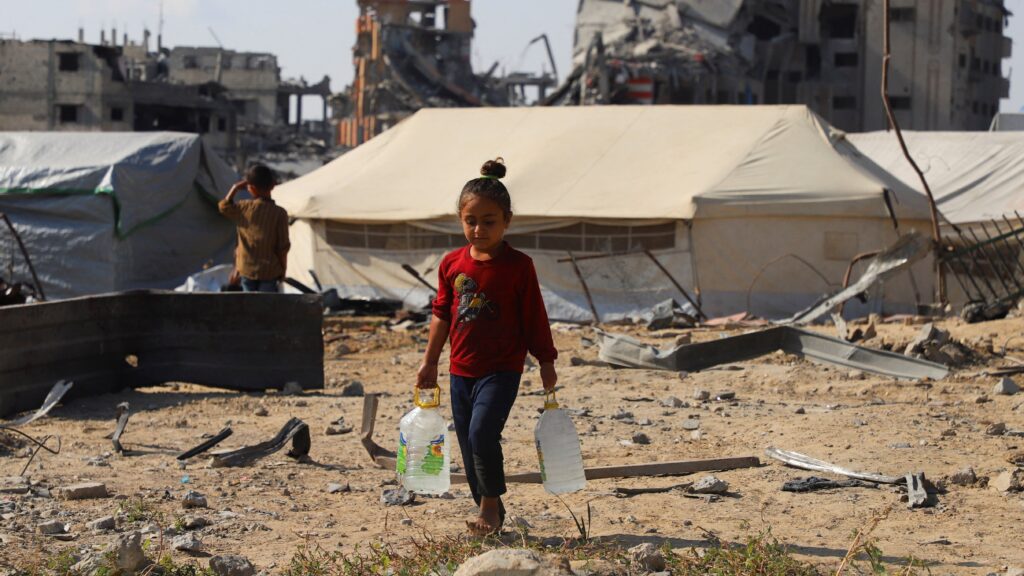The Israeli army is disposing of waste, particularly from construction, into the Gaza Strip, despite warnings that the besieged enclave is buried under more than 61 million tonnes of debris.
According to a Haaretz report, footage and information obtained by the Israeli news outlet revealed that trucks are entering Gaza filled with construction debris and unloading rubble onto the streets.
Clips show excavators dumping wreckage into trucks near the Kissufim crossing, repeating the process of throwing it into the blockaded strip.
The news outlet notes that the waste includes large quantities of construction waste and garbage left behind by the military during the over two-year-long genocidal war.
Israeli army officers told Haaretz that field commanders made the decision to dump waste materials inside Gaza, with one officer saying they were ordered to allow trucks owned by private Israeli companies to enter the territory and throw out their trash wherever they wanted.
New MEE newsletter: Jerusalem Dispatch
Sign up to get the latest insights and analysis on
Israel-Palestine, alongside Turkey Unpacked and other MEE newsletters
One soldier speaking to the news outlet noted that he asked his commanders why they were disposing of litter randomly in the strip, instead of at a disposal site.
The commanders remarked that as foreign countries are expected to enter Gaza for reconstructions purposes, they would have to deal with the Israeli army waste as well.
Another soldier who lives nearby Gaza’s crossing expressed his frustration, saying that “we’ll have mountains of garbage right in front of our homes for the rest of our lives, inside Gaza”.
“What’s the logic in taking thousands of tonnes of waste and dumping it just a few hundred metres from our houses?”
An additional officer said that some of the items they were dumping, including construction debris full of iron, irrigation pipes and concrete blocks, could be utilised by Hamas.
“Beyond the fact that it’s disgraceful, it’s hard to believe this is what the army is dealing with,” he said.
The report comes after warnings from a UN agency indicating that the estimated 250,000 buildings damaged or destroyed during Israel’s war on the enclave has generated 61 million tonnes of debris.
“About 15 percent of this debris could be at relatively high risk of contamination with asbestos, industrial waste or heavy metals if waste streams are not effectively segregated early on,” the UN Environment Programme (UNEP) added.

Carbon footprint from Israel’s war on Gaza exceeds 100 countries
Read More »
The latest assessment made by UNEP determined that nearly two-thirds of the debris in Gaza was made in the first five months of the war.
The destruction of buildings also accelerated in the months leading up to the current ceasefire.
From April to July, eight million tonnes of debris were generated mostly in the southern part of the territory between Rafah and Khan Younis.
“Ending the human suffering that has engulfed Gaza must be the first priority,” said Inger Andersen, the agency’s executive director.
“Restoring freshwater systems and removing debris to enable humanitarian access and restore essential services are urgently required to save lives. The recovery of vegetation, freshwater ecosystems and soil will also be critical for food and water security, and to ensure a better future for Gaza’s people.”
Andersen raised alarms on the situation “going from bad to worse” in the besieged territory, expressing that if it continues, “it will leave a legacy of environmental destruction that could affect the health and wellbeing of generations of Gaza residents”.

